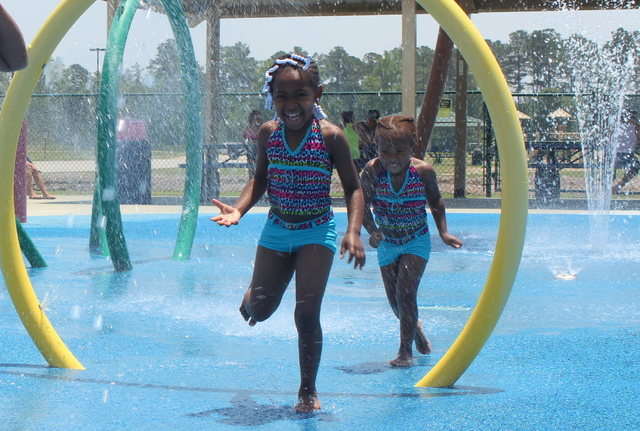
LAURINBURG — There may be no end in sight for the stretch of scorching-hot weather that has settled over the Southeast, but, for the next few days at least, the mercury is expected to stay within the double-digits.
Following three days which local thermometers climbed as high as 102, today’s high is predicted to reach 96.
“We will get a little bit of relief from the heat — if you consider mid to upper 90s relief,” said Keith Sherburn, a meteorologist with the National Weather Service in Raleigh, “but we will stay very hot all week.”
Though the weather service does not keep data on hand for Scotland County, Sherburn said Monday’s temperature, recorded as 101 in Raleigh and Fayetteville, broke the record for high temperatures for June 15, set in 1981 with a high of 98.
“This is uncharted territory so to speak for June compared to standing records,” he said. “Even in July, this would be above average.”
Sherburn said scattered afternoon thunderstorms through the rest of the week may alleviate the “stagnant” atmospheric conditions that have allowed heat to build up. High temperatures are expected to hover around 97 degrees through Monday, with the largest chance of a thunderstorm on Saturday afternoon.
With the heat have come multiple advisories issued by the service, including a warning against leaving children and pets inside a vehicle, where temperatures can quickly reach dangerous levels.
Dr. Douglas Nederostek, medical director of Scotland Memorial Hospital’s Emergency Department, has also cautioned those who work or play outside to take frequent breaks and pay attention to the warning signs of heat-related illness, from cramps and exhaustion to the most serious, heat stroke.
“Obviously this time of the year is the worst for them,” he said. “Many people may overdo it today, go home and rest, and in 24-36 hours they feel terrible, notice that their urine is really dark and see other symptoms of organ damage, and come in for fluids.”
Nederostek recommends preemptive hydration, as thirst is an indicator of dehydration. The very young and very old are most susceptible to the heat. Symptoms of a heat-related illness include weakness, headache, nausea and extreme sweating.
“If you’ve been sweating excessively and stop sweating, that’s actually a problem and a big indicator of heat stroke,” Nederostek said. “People think you’re cooling off but you’re really not.”
Abbi Overfelt can be reached at 910-506-3023.

